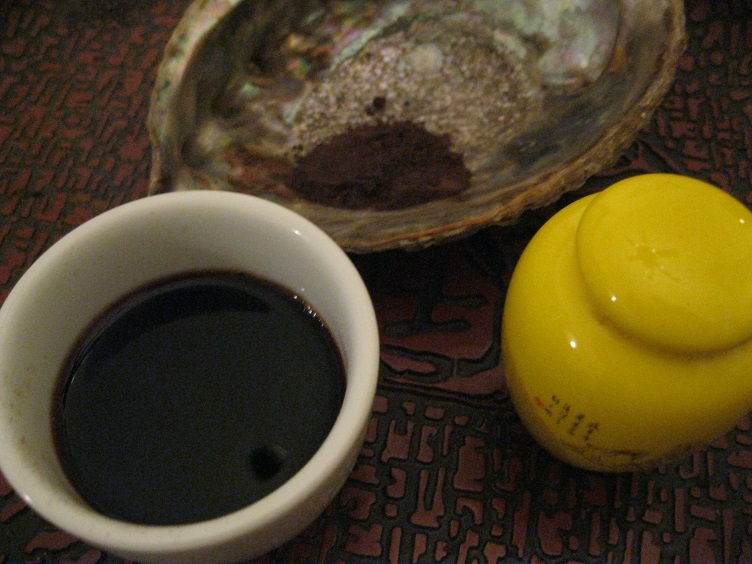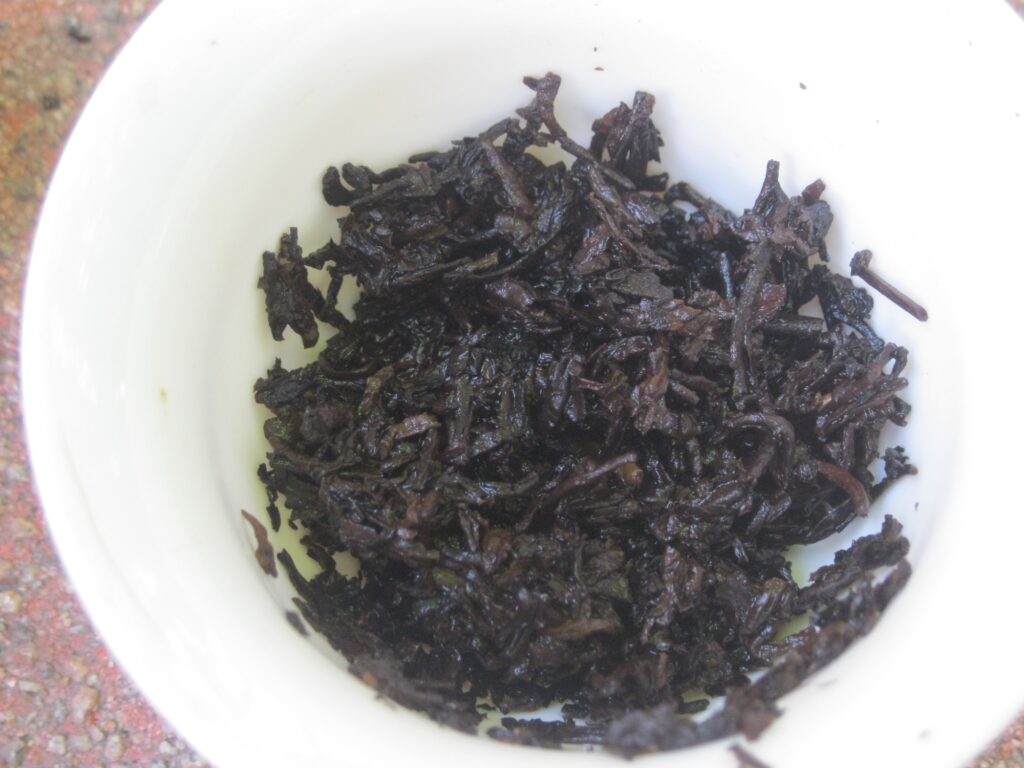Milky Machinations
Milky Machinations finds the Puerh Junky engaged in countless Milk Tea variations. Let’s take a gander at the latest involving Puerh Espresso.
Pu’erh Espresso
Pu’erh Espresso is the sexy name that Puerh Junky bestowed upon a few kilos of puerh tea paste stored since about ’17. Tea paste is brewed then reduced into a glue, which is then left to dry. It’s usually sold in blocks or cubes. There are companies that specialize in making it, with some productions commanding very high prices based upon the clarity. These dreadfully fancy ones don’t seem to be consumed as tea, but rather as pills for various medical conditions. As with traditionally shaped ripes, the older the tea paste the better it is considered to be. It’s hard to say if this is entirely due to the Chinese penchant for valuing “the old.” The same funkified factor that makes many ripes undrinkable until a few years after production also applies to tea paste. In other words, that wodui aroma doesn’t get cooked out in the course of its processing. That smell is simply something that must age out. Additionally, aging seems to have mellowed some of the tannins, though it doesn’t appear to have become any sweeter, as is the case traditional-style ripes. Now for the Milk Tea part. . .
Milk Tea
Milk Tea with Pu’erh Espresso seems to be a perfect marriage. One of the main benefits has to be convenience. In previous iterations of milk tea, the ripe puerh had to be brewed for about 15 minutes before cashed leaved being extracted and spices being added. With Pu’erh Espresso, that’s all one step. This means that the spices cook the same amount of time as the brew, saving at least 15 minutes.
Second, there’s never any bother about extracting everything from the leaves because the extraction is what Pu’erh Espresso is. Previously about 13.5g of tea brewed up to make about 6cups of brew. Now two-level grams make just as much if not slightly stronger and one-heaping gram and one level gram serving up a positively intense base upon to which one adds milk, cream, bone broth, and butter. Blending these ratios works faster without first cooking the tea because everything can be added at once, though milk and cream should be added toward the end to allay curdling.
Along these lines, there’s no wringing out the last bits of concentrated brew from the leaves. My strainer is staying in the drawyer, as the cardamom is pulverized in the blending. Add ons?
Add Ons
There’s a big batch of sour plum, hawthorn, and tamarind ferment that I made up in Sept that doesn’t agree with the ole teeth when drunk strait. The urge to ever doctor the Milk Tea to execute certain health benefiting properties never ends. Tamarind is well researched for its effects on counteracting fluoride, and though its dose in this brew would in no way be therapeutic, it can certainly be considered mollifying in terms of the fluoride naturally found in camelia sinesis.
Balloon flower root is a very common Korean vegetable high in saponins. These compounds found in balloon flower root can be helpful for those suffering from various form of phlegm disorders, including sinuses, snoring, cough. Again, the idea of its use is to not make the potion an actual medicinal beverage, but it can enhance properties of ripe itself, as ripe is first-and-formost consider a digestive that works by enhancing metabolism of what is generally considered phlegm by Chinese medicine standards.
Wrap Up
Milky Machinations offers more insights into the versatility of Milk Tea, while touting the fantastic results of using Pu’erh Espresso instead of actual leaves. It’s a time saver, simplifies preparation, and makes gauging additions easier. Pu’erh Espresso packs a righteous punch, so nothing is lost in terms of intensity by substituting it for leafy ripe. If anything it adds to the intensity.


